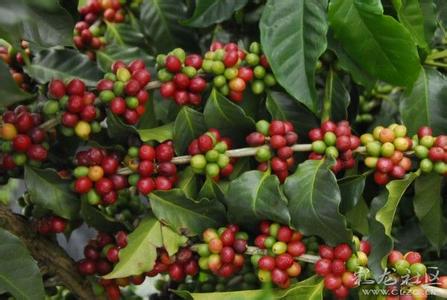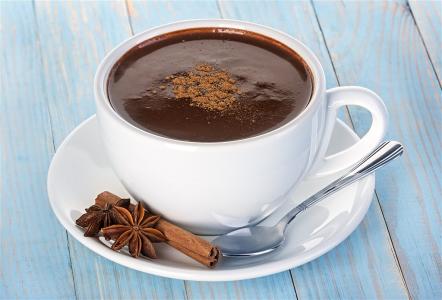Introduction of varieties produced by grinding scale flavor treatment method of high-quality coffee beans in Honduras
Honduras has a tropical climate.
The coastal plain has a tropical rain forest climate. The annual average temperature is 23 ℃; the rainfall is abundant, and the annual precipitation in the northern coastal zone and mountain windward slope is as high as 3000 mm. There will be "fish rain" in some areas from May to July, because tornadoes form on part of the sea surface of Honduras from May to July. Tornadoes roll the fish in the sea to the sky and throw it into some areas, which becomes fish rain.
The flag of Honduras was launched on January 18, 1949. the flag is rectangular and the ratio of length to width is 2:1. From top to bottom, the flag consists of three parallel rectangles: blue, white and blue. There are five blue five-pointed stars in the middle of the white rectangle. The color of the national flag comes from the color of the original Central American federal flag. The upper and lower blue wide stripes symbolize the Pacific Ocean and the Caribbean respectively; white symbolizes the pursuit of peace; and the five five-pointed stars were added in 1866, expressing the desire of the five countries that make up the Central American Federation to unite again.
In the coffee garden, because the planting area belongs to the mountain area, people pick coffee beans by hand, and then process them carefully in order to produce better quality coffee beans. Honduras collects 3 million bags of coffee every year and provides you with multi-quality coffee. Now it has become one of the top ten coffee exporters in the world.

In Honduras, coffee-producing areas are divided into six major producing areas, spread to the west and south, namely Santa Barbara (Santa Barbara), El Paraiso (El Paraiso), Copan (Copan), La Paz (La Paz), Gongmayagua (Comayagua) and Olanqiu (Olancho), with an average height of over 1100 meters above sea level. Coffee varieties are Arabica, 69% are HG "High and low Coffee", 12% are SHG "Special Highland Coffee" and 19% are CS. There are mainly Typic, Bourbon, Caturra, Villa Sarch and Lempira.

Although there are no distinct characteristics of Honduran coffee, its biggest feature is its rich and balanced taste as a whole. In detail, it has a medium or shallow acidity, which is obvious but not strong. Sometimes with a slight floral or fruity aroma (generally speaking, different producing areas, different elevations of beans have different flavor performance) slightly bitter and obvious sweet. The overall taste of Honduras is balanced, sour and bitter are not strong, and the balance between the two is better. Therefore, the extremely balanced nature of Honduran coffee makes it widely used. It can not only be used to mix coffee, but also can be brewed as a single product. Honduran coffee can be mixed with Italian concentrate, which will show a commendable flavor.

Important Notice :
前街咖啡 FrontStreet Coffee has moved to new addredd:
FrontStreet Coffee Address: 315,Donghua East Road,GuangZhou
Tel:020 38364473
- Prev

There are several flavor descriptions of bourbon coffee beans. Introduction to the region produced by taste treatment.
The preparation method is to drop a few drops of sherry in deep-fried coffee. The taste of coffee and sherry is very good. The atmosphere of homesickness for coffee reaches its climax: there is a remote village in France called Bourbon, where the coffee has a sweet and sour taste. I can't help but think of the night a long time ago with a variety of flavors, low acidity and lubrication. Bourbon round and pointed
- Next

Introduction to the Flavor description treatment method of Grinding scale of Guatemala Agua Dursai Coffee Bean
Unlike the traditional method of making iced coffee, cold extraction requires more patience and time. Joe said. The original cold extraction exclusive coffee beans will be freshly ground, but also in the cold extraction special apparatus Toddy Brewer slow extraction, in order to get the perfect cold extraction iced coffee. Slow extraction instead of hot water rapid extraction can better bring out the sweetness of coffee itself.
Related
- Detailed explanation of Jadeite planting Land in Panamanian Jadeite Manor introduction to the grading system of Jadeite competitive bidding, Red bid, Green bid and Rose Summer
- Story of Coffee planting in Brenka region of Costa Rica Stonehenge Manor anaerobic heavy honey treatment of flavor mouth
- What's on the barrel of Blue Mountain Coffee beans?
- Can American coffee also pull flowers? How to use hot American style to pull out a good-looking pattern?
- Can you make a cold extract with coffee beans? What is the right proportion for cold-extracted coffee formula?
- Indonesian PWN Gold Mandrine Coffee Origin Features Flavor How to Chong? Mandolin coffee is American.
- A brief introduction to the flavor characteristics of Brazilian yellow bourbon coffee beans
- What is the effect of different water quality on the flavor of cold-extracted coffee? What kind of water is best for brewing coffee?
- Why do you think of Rose Summer whenever you mention Panamanian coffee?
- Introduction to the characteristics of authentic blue mountain coffee bean producing areas? What is the CIB Coffee Authority in Jamaica?

